contact Boss
Don’t rush to close it, talk to our boss directly, you will get a surprise.



1900+ Users
Completed User Services
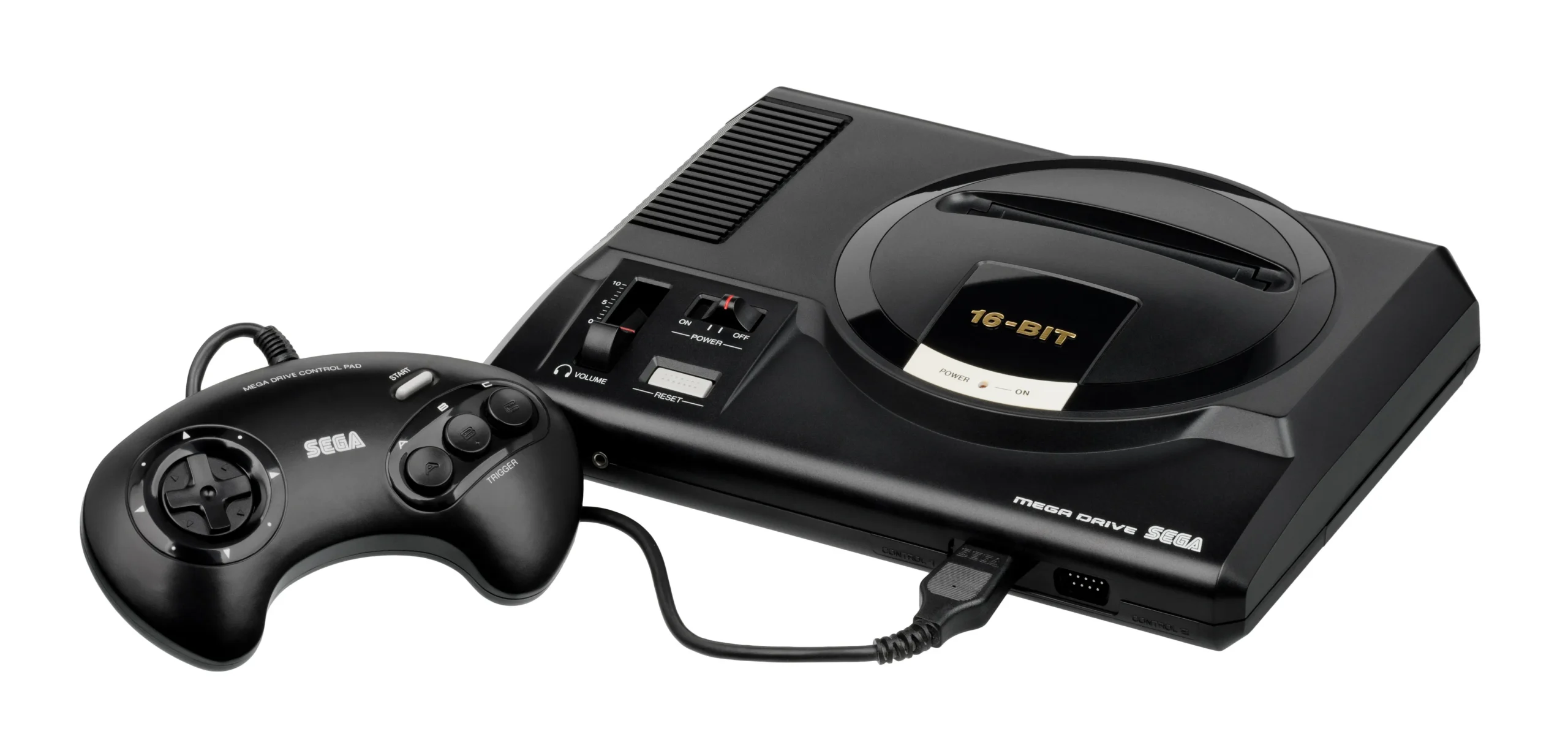
The Mega Drive, a successor to the Sega Mark 3, was released by Sega Enterprises on October 29, 1988, for 21,000 yen (US$189). It is a classic 16-bit home video game console from Sega and holds a significant place in gaming history.
Although SEGA Mark III games can be played by connecting a device called the Mega Adapter, the Mark III was originally developed with too much emphasis on backward compatibility, which placed too many design restrictions. Therefore, this machine uses a completely new design from scratch.
The original model, released in 1989, features a black body and an angular, industrial design.
The “16-BIT” logo prominently displayed on the front highlights its performance advantages, creating an overall professional and powerful impression.
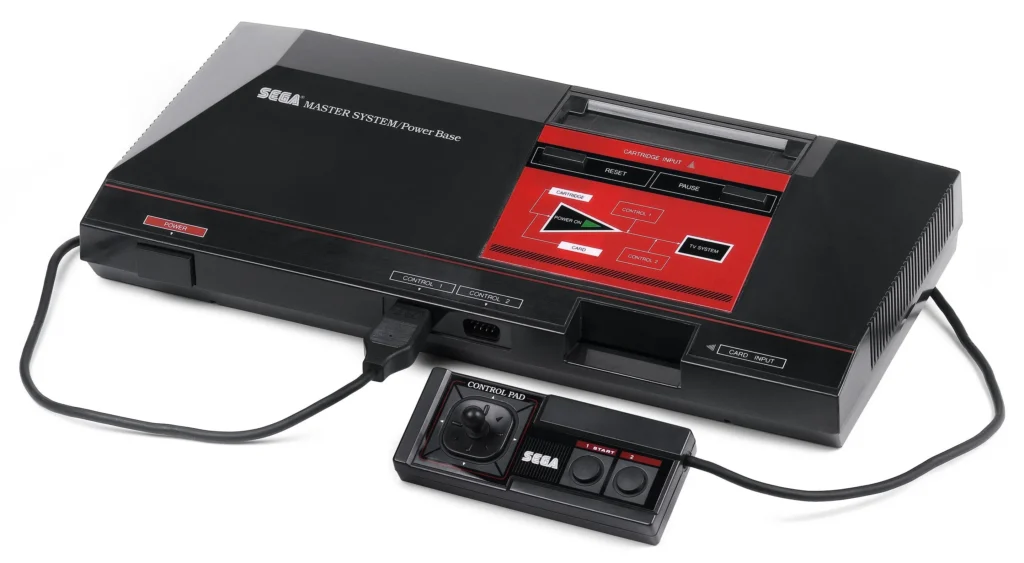
This improved model, released in 1993, was more compact and lighter than the Model 1. It featured a rounded top with softer edges, and the “16-BIT” logo was replaced with a simpler Sega logo and a smaller model logo, resulting in a more modern and approachable appearance.
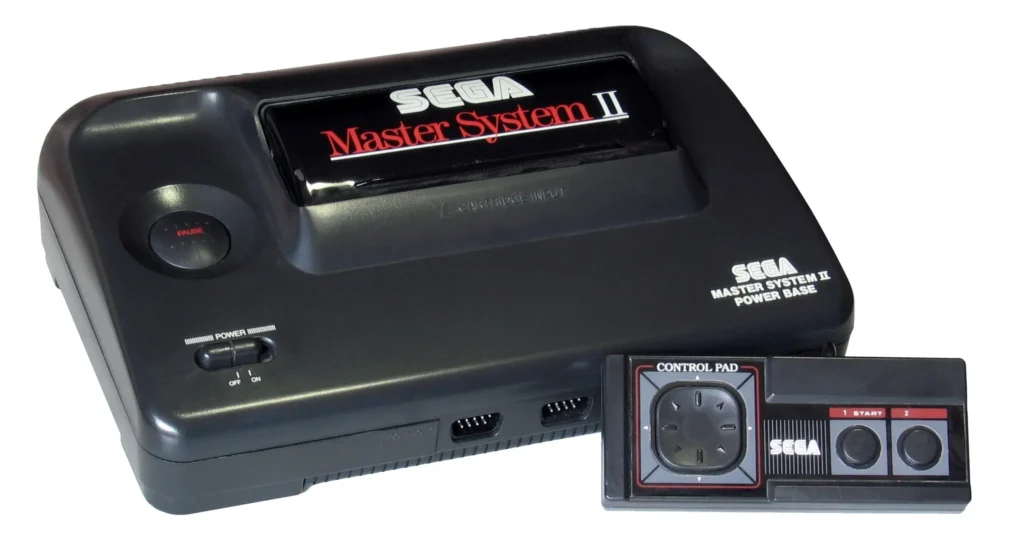
Since the goal of developing this product was to provide high-quality ports of popular arcade games, the design team gave it high performance comparable to arcade motherboards of the time.
The Mark 3 used the popular Z80 CPU, while the Medallion used a 16-bit 68000-series CPU, with the Z80 serving as a secondary CPU for audio processing.
The combination of two CPUs significantly improved the Medallion’s processing performance. This architecture was the same as that used in Sega arcade games.
The Mark 3 could display up to 64 colors, while the Medallion could simultaneously display 64 of 256 colors.
In addition, to accommodate the large, numerous, and colorful characters, the Medallion increased the display size of sprites to 32×32 pixels (compared to 8×8 pixels for the Mark 3).
The Medallion also allowed the use of two background images simultaneously, creating a sense of depth on the screen.
The Medallion incorporated the highly acclaimed stereo FM sound source from Sega arcade games. Also, it featured a PCM sound source (capable of playing pre-recorded sounds such as real-life voices).
Processor: Utilizes a dual-processor architecture consisting of a Motorola 68000 @ 7.6MHz and a Zilog Z80 @ 3.58MHz. The Motorola 68000 is a PC-class CPU with exceptional computing performance, ensuring smooth action games on the MD.
Memory: 64KB RAM, 64KB VRAM, and 8KB audio RAM.
Display: In NTSC format, progressive mode resolutions are 320×224 and 256×224, and interlaced mode resolutions are 320×448 and 256×448.
In PAL format, progressive mode resolutions are 320×240 and 256×240, and interlaced mode resolutions are 320×480 and 256×480. The total number of colors displayed is 512, with a maximum of 64 colors displayed simultaneously.
Sound Effects: The audio architecture is composed of three audio processing chips, including the Yamaha YM2612 and Texas Instruments SN76489. The sound effects are extremely strong and the music is dynamic, with an effect that is no less than that of an arcade machine.
The Mega Drive’s hardware standards were “faster processing speed,” “more beautiful graphics,” and “higher-quality sound.”
The Mega Drive’s television commercials at the time used the slogans “Breaking Speed,” “Breaking Visuals,” and “Breaking Sound” to promote and publicize these three key features.
Although all manufacturers shared the same vision, the Sega Mega Drive was designed with arcade game manufacturers in mind, and thus differed somewhat from other consoles designed for home use.
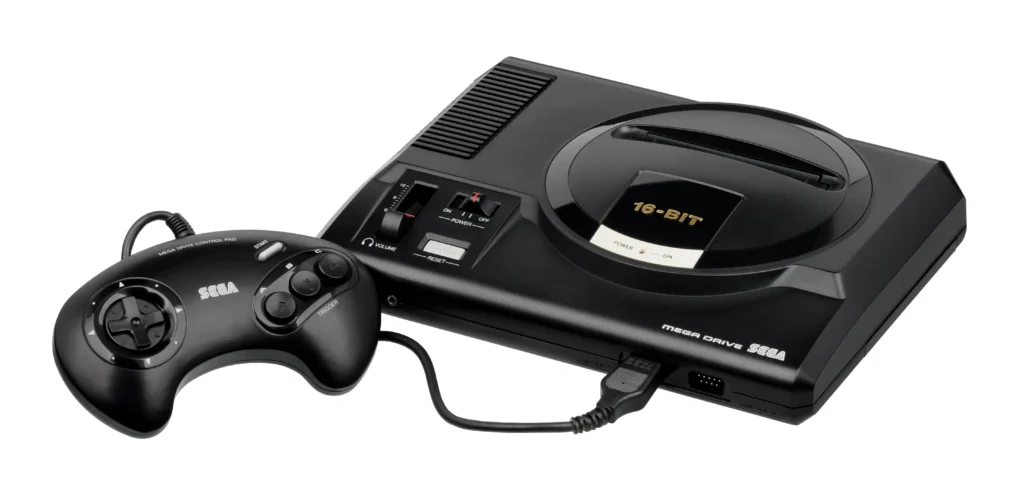
The 68000 series CPU used in the Mega Drive was originally developed for military use and workstations (computers used in complex business operations), and was by no means a mass-market product.
When SeGa decided to use this CPU in its home game console and placed a one-million-unit order with its manufacturer, Motorola (now Freescale Semiconductor), Motorola was extremely shocked and wary of the then-unknown Japanese company’s actions.
Motorola therefore decided to mitigate the risk by supplying Sega with a compatible 68000 chip produced by its licensee, Signetics.
Thinking back then, Motorola’s feelings were probably like those of a restaurant owner who sees a stranger walk in and order 100 servings of ramen.
Afterward, as Mega Drive shipments steadily climbed, subsequent Mega Drives legitimately used the original Motorola 68000.
On the other hand, Sega’s massive order allowed Motorola to quickly cover development costs and depreciate fixed assets, significantly reducing the price of the 68,000, making it a mainstream product in the embedded CPU market.
This example illustrates how the success of a home game console can even influence the landscape of an entire industry.
The Mega Drive underwent several iterations, becoming increasingly smaller and cheaper. This trend was particularly evident in markets outside of Japan, where sales were stronger.
Like the Sega Mark 3, the Mega Drive sold better outside of Japan than in Japan. Combined sales of over 28 million units in North America and Europe pale in comparison to the 3.58 million units sold in Japan.
Sonic the Hedgehog 3 was particularly popular, leading to the release of a special edition Mega Drive console bundled with a Sonic game. Sonic’s status in North America was even on par with Nintendo’s Mario.
Given the crucial role that third-party strategies played in the success of the Nintendo Entertainment System, Sega began implementing this strategy as well.
This was arguably Sega’s biggest shift in strategy during the Mega Drive era. While Sega didn’t impose a limit on the number of titles released, it adopted Nintendo’s established quality control, standardized cartridge production, and licensing fees.
In its early days, the Mega Drive struggled due to a limited number of games, but with the implementation of its third-party strategy, more and more software companies joined the MD camp. As Sega expected, the Mega Drive received strong support from many companies centered on porting arcade games.
The first third-party game to be released was Thunder Force II MD, developed by Technosoft and ported from the Sharp X68000 computer.
As the name suggests, the X68000 uses a 68000 series CPU, making porting relatively easy. Subsequently, arcade software companies like Namco, Taito, and Konami, as well as renowned international companies like Electronic Arts, joined the fray, releasing numerous game titles. In this respect, Sega’s third-party strategy was a highly successful transformation.
In addition, the MD also released many high-quality exclusive games, such as “Michael Jackson: Moonwalk,” “Mickey Mouse: Castle of Illusion,” and “Streets of Rage.”
Thanks to these titles, the MD’s success far surpassed that of its predecessor, the SEGA Mark III (Master System), thus marking the end of Nintendo’s dominant position in the FC market and ushering in a new era of three major players in the video game industry.
It was probably around the first half of 1996, when I was in third or fourth grade. My brother and I saved up our allowance for almost a year and secretly bought a Mega Drive—what many people called a stereoscopic machine back then—without telling my family. From then on, my NES was put away.
Not long after I bought it, my mom found out. I told her I borrowed it from a classmate, and she believed me. Only later, when I grew up, did I realize she just didn’t want to expose me.
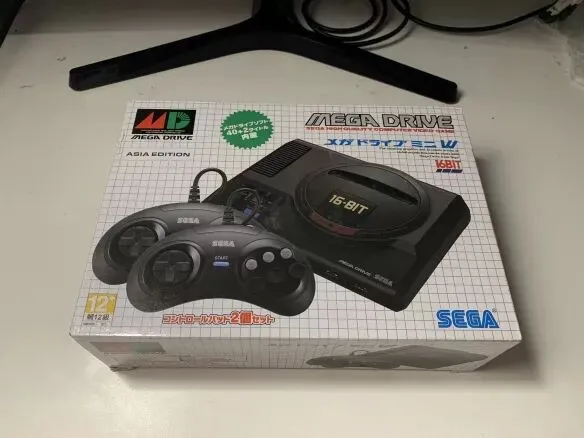
I actually didn’t own the Mega Drive for very long—only about one summer vacation. I didn’t buy many cartridges myself. I remember only buying three: Slam Dunk, Shining Crusader, and Virtua Racing. The rest were games I borrowed from others.
Virtual Racing was quite expensive when I bought it; I think it cost over $50, which nearly wiped out my savings.
Virtual Racing, which came with the Mega Drive, was a port of the arcade game. To achieve better 3D effects on home consoles, a chip was built into the cartridge.
I’m not a fan of racing games; I just wanted to experience the visual effects of a game with multiple visual shifts at home.
Because I love comic books, I really enjoyed Slam Dunk on the Mega Drive. It was the first Mega Drive cartridge I ever bought, and I bought it along with the console. I always played a few of them before switching to other games.
My brother bought Virtua Racing after seeing a description in a gaming magazine. With its 45-degree angled viewing angle, the graphics were quite good at the time. This was also the first ARPG game I played. I thought it was quite fun back then. It is also one of the few games I completed on the Mega Drive.
There were a lot of fun games on the Mega Drive back then, including Phantasy Star IV, the Streets of Rage series, Super Ninja, Kuga, Fatal Fury, and so on. However, I had little patience for games, and I never finished most of the ones I played.
For me, the most enjoyable thing was the anticipation I felt after getting the game cartridge and turning it on, and the joy of playing the game in between. As for the ending, that wasn’t important.
Before I started middle school, I sold the console and three cartridges to a classmate for a very low price; I don’t remember how much I got. It was mainly because I wanted to buy a Super Nintendo, and saving up for a new console was a joy.
The past has faded into the wind, leaving only a lingering taste of my youth.